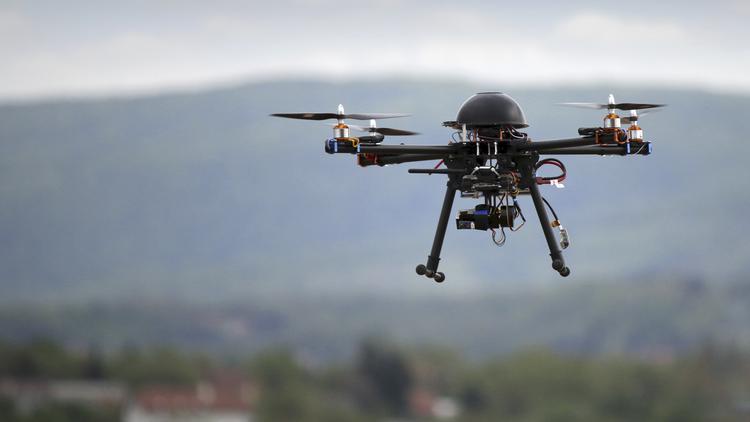Mar 11, 2016, 9:26am CST

Kent Hoover Washington Bureau Chief
The sky’s the limit for business use of drones, but the commercial potential of unmanned aerial systems is being thwarted by the failure of regulators to keep up with the technology.
That’s the takeaway from a Senate Small Business and Entrepreneurship Committee hearing Thursday. Drones already are being used for everything from aerial photography to equipment inspections, but “what are likely to be the most important applications of unmanned aerial systems remain unknown, just as the most important Internet applications were unknown when the Internet first became commercialized,” said Eli Dourado, director of the technology policy program at the Mercatus Center at George Mason University.
Businesses that want to fly drones for commercial purposes now have to go through an exemption process that requires operators to receive 20 hours of pilot training.
Small businesses, however, are limited in developing new applications for drones by the lack of federal regulations governing commercial use of unmanned aerial systems. The Federal Aviation Administration missed last year’s deadline for issuing such a rule, leaving a costly and unwieldy exemption process as businesses’ only option for getting their drones in the air.
So far, the FAA has granted more than 3,600 exemptions — out of 13,000 applications — on a case-by-case basis for low-risk commercial drone operations in 35 industries. Small businesses account for most of these exemptions, according to the Association for Unmanned Vehicle Systems International.
One of those small businesses was Physical Sciences Inc. in Andover, Mass. It has commercialized a drone it developed for the military through a Small Business Innovation Research grant.
“Today our systems are used to inspect powerlines, pipelines, wind turbines, solar arrays, endangered species habitats — the list grows weekly,” said Thomas Vaneck, PSI’s vice president of disruptive technologies.
The process to get the exemption was tedious, he said, because the FAA had to apply rules developed for manned aircraft for unmanned systems.
Another drawback to the current exemption process for commercial drones is that operators must hold at least a sport pilot certificate. That requires 20 hours of training in a manned aircraft and costs thousands of dollars, said Brian Wynne, president and CEO of the AUVSl, a trade association for the drone community.
That makes “cost a barrier to entry for some aspiring UAS operators,” Wynne said.
This level of training is not needed to fly small drones, Vaneck said. Military operators of PSI’s InstantEye drone learn how to fly it in two days. For commercial uses, online training should be sufficient, followed by an exam to make sure users understand rules governing air space.
Wynne noted that the draft rule being considered by the FAA for small commercial drones requires only that operators pass an aeronautical knowledge test every two years. The FAA’s proposed rule also would allow commercial drones to fly higher than the exemptions currently allow.
But until the FAA finalizes its commercial drone rule, “people are sitting on the sidelines,” said Gregory McNeal, a law professor at Pepperdine University who co-founded AirMap, which provides air space information to drone operators.
“We’re killing innovation because of this,” said Sen. Cory Booker, D-N.J.
McNeal wants Congress to eliminate the distinction between recreational and commercial use for very small drones. This would enable entrepreneurs, educators and students to experiment with drones by following the less-restrictive limitations already in place for hobbyists and other recreational users.
Committee Chairman David Vitter, R-La., has introduced legislation to do this.
The Air Lines Pilots Association’s defended the FAA’s deliberate approach to issuing regulations for commercial drones. The agency has received more than 4,000 comments on its proposed rule, it notes.
“The technology must be thoroughly evaluated to be understood, potential failures must be identified and mitigated, and there must be a proven safety case for the intended operations before they can be introduced into the comprehensive system of safety and operational requirements that exists in today’s public air space,” said ALPA President Tim Canoll. “This does not happen quickly, and it must be methodical to ensure the continued safety of the national airspace system.”